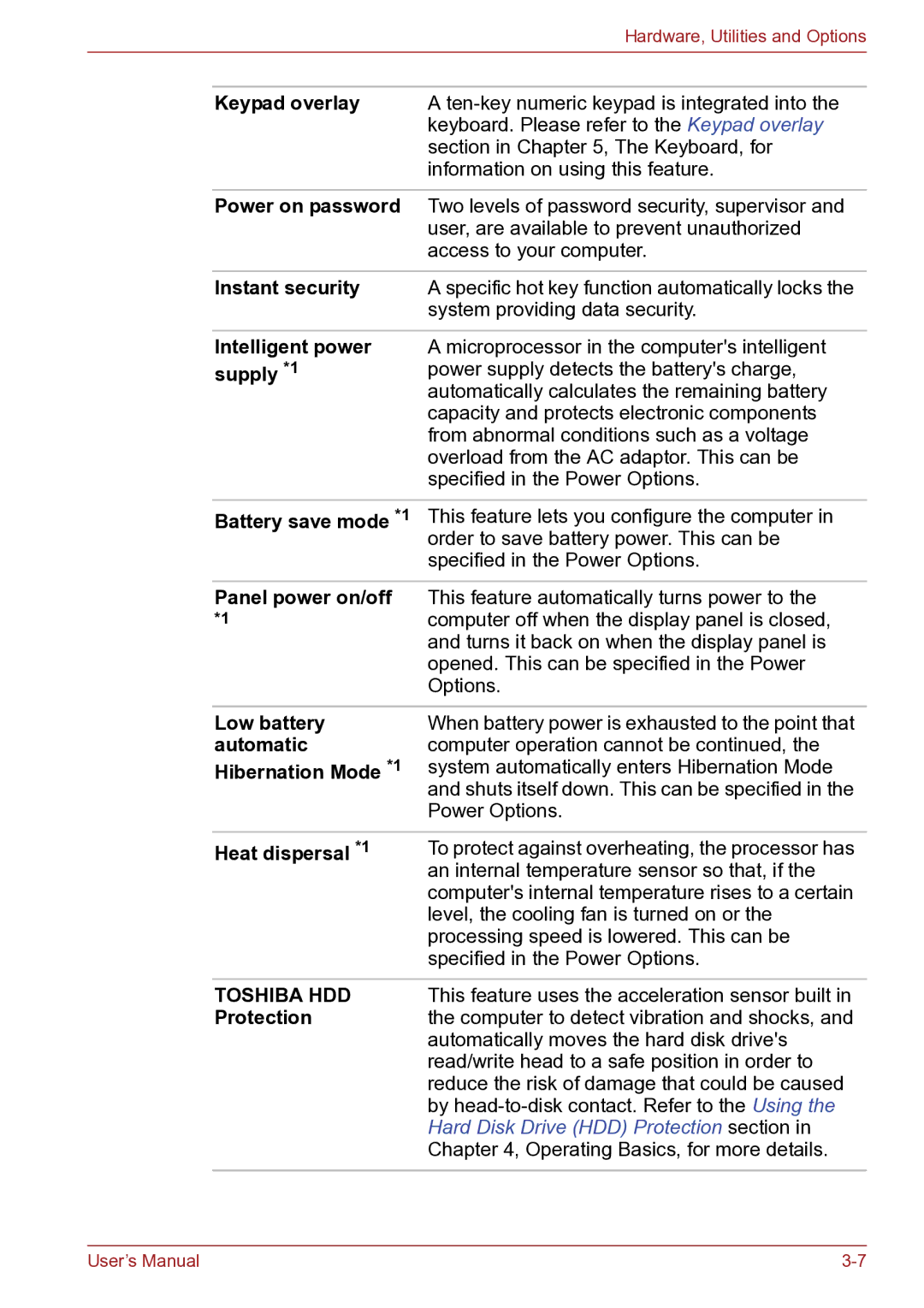
|
| Hardware, Utilities and Options |
|
|
|
| Keypad overlay | A |
|
| keyboard. Please refer to the Keypad overlay |
|
| section in Chapter 5, The Keyboard, for |
|
| information on using this feature. |
|
|
|
| Power on password | Two levels of password security, supervisor and |
|
| user, are available to prevent unauthorized |
|
| access to your computer. |
|
|
|
| Instant security | A specific hot key function automatically locks the |
|
| system providing data security. |
Intelligent power supply *1
A microprocessor in the computer's intelligent power supply detects the battery's charge, automatically calculates the remaining battery capacity and protects electronic components from abnormal conditions such as a voltage overload from the AC adaptor. This can be specified in the Power Options.
Battery save mode *1 This feature lets you configure the computer in order to save battery power. This can be specified in the Power Options.
Panel power on/off This feature automatically turns power to the
*1computer off when the display panel is closed, and turns it back on when the display panel is opened. This can be specified in the Power Options.
Low battery automatic
Hibernation Mode *1
When battery power is exhausted to the point that computer operation cannot be continued, the system automatically enters Hibernation Mode and shuts itself down. This can be specified in the Power Options.
Heat dispersal *1 | To protect against overheating, the processor has |
| an internal temperature sensor so that, if the |
| computer's internal temperature rises to a certain |
| level, the cooling fan is turned on or the |
| processing speed is lowered. This can be |
| specified in the Power Options. |
|
|
TOSHIBA HDD | This feature uses the acceleration sensor built in |
Protection | the computer to detect vibration and shocks, and |
| automatically moves the hard disk drive's |
| read/write head to a safe position in order to |
| reduce the risk of damage that could be caused |
| by |
| Hard Disk Drive (HDD) Protection section in |
| Chapter 4, Operating Basics, for more details. |
|
|
User’s Manual |
